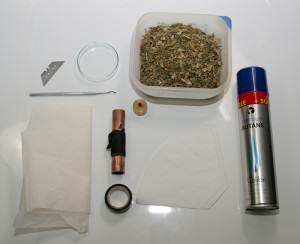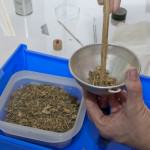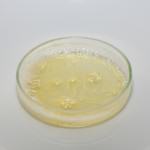How to make BHO
List of contents
What is BHO?
The fascinating world of cannabis concentrates is almost 200 years old. The use of tinctures and extracts made from this plant was once something exclusive for the higher classes, and even Victoria - Queen of the United Kingdom of Great Britain and Ireland during the XIX century - used these extracts to relief several medical conditions.

Dr. O'Shaughnessy introduced Cannabis and its therapeutical properties to the Western medicine by 1840. From this moment, the use of Cannabis was widely spread within the population.
In this article we'll present you a very popular cannabis concentrate called BHO - Butane Honey Oil - that has increased its popularity during the last years, especially in American dispensaries and Spanish cannabis clubs. As the name suggests, the used solvent in this case is Butane, which will be removed during the purging process of BHO.
This oil looks like honey (although it can acquire different textures) and is extremely concentrated, reaching THC levels of 70% and even higher. The process is easy if we follow a few safety precautions. We'll need the following materials.
Equipment needed to make BHO

- BHO extractor (a copper or borosilicate tube is ok)
- 22mm copper lid with adapter for gas can
- Butane gas (free from impurities: Atomic butane, Colibrí butane, etc.
- Coffee filter or 25 micron mesh
- Pyrex tray
- Clean razor blades
- Flanges or insulating tape
- Parchment paper
The amount of weed needed depends on the size of the extractor. Always remember: the higher the quality of the buds, the higher the quality of the extract.
How to make Butane Honey Oil (BHO)
First, it should be noted that this type of extraction must be performed outdoors, in a well ventilated area and free from heat/spark sources. Also, keep in mind not to wear clothes that may be charged with static electricity. Using Butane gas in a closed area is extremely dangerous since it is highly volatile and flammable. Unfortunately, there have been cases of explosions caused by gas accumulations in closed areas.
Also, using Butane gas free from impurities is crucial if we want a top grade and safe medical product. Otherwise our oil will be contaminated with hazardous substances for our body. For this post, we have used Colibri gas and outdoor buds of Easy Haze / K13 Haze from Philosopher Seeds.

We first put the plant material in the extractor. Do not press it too hard and try to use buds of similar size; our goal is avoiding any air pocket inside the extractor but without pressing too much the weed.
Fix the filter with flanges or insulating tape on one end and the copper lid with the adapter valve for the gas can on the other. You can put a layer of activated carbon between the plant matter and the copper lid.
Put both the butane gas and the extractor tube in the freezer for at least one hour. In this way, we greatly facilitate the extraction process of all cannabinoids and terpenes. After this time, we are ready to begin the extraction.

The amount of gas needed depends on the capacity of the extractor (lenght and diameter). Put the Pyrex tray under the extractor and you can start passing the butane gas through the extractor (just press the can against the valve attached to the copper lid of the extractor in vertical position). As soon as the gas starts passing through the extractor, it will immediately freeze, so wearing protective gloves is advised.
Using too much butane will make it harder to purge later on. If you are using dry plant material, the colour of the gas coming out from the extractor indicates if we are still extracting cannabinoids: if the gas is golden you should continue the extraction process, while you should stop it when it turns clear.
Evaporation and purging of Butane in BHO

Once all cannabinoids have been extracted it is time to remove the gas from the oil. This can be done in several ways. The ideal would be vacuum purging, using a heating plate, a vacuum chamber and a vacuum pump. If you don't have this equipment you can purge your oil with a water bath. This is how we do it:
First, you need to heat some water in a tray or similar and put the Pyrex tray with the oil on it, so it is heated by the water. Once it starts heating, you'll observe how small bubbles are generated; the butane gas trapped in the oil is evaporating. You can use a pointed object to burst the bubbles and thus speed up the process.
After about an hour, in which we have changed the hot water a few times, we shouldn't see more bubbles, which means our oil is ready to be collected with the razor blades. The hotter the Pyrex tray, the easier we'll collect our oil, although we shouldn't raise the temperature above 40ºC, otherwise we'll evaporate a considerable amount of cannabis terpenes.

We can let it cool and then repeat the water bath process to be sure that no butane will remain in the oil before collecting it. Once the second water bath is done, we can start collecting the oil by gently scraping the surface of the Pyrex tray. As you collect it, put the razor blades in the freezer so removing the oil from them will be much easier. You can use parchment paper if you need it.
Once we have all our oil collected, we can now store it in a silicone/glass jar. The ideal would be storing it in a dark, dry and cold place: your fridge is perfect for this purpose. In this way, it stays hard and easy to handle while maintaining its terpene profile.
When handling BHO, a dabber and a concentrate dish greatly facilitate our task, so we don't have to touch it with our hands. BHO can be extremely sticky!
Depending on several factors like resin quality, plant matter moisture, temperatures, vacuum, filter size, etc. we'll get different textures distinguished by a variety of names: sap, oil, budder, wax, moonrock, shatter, etc.
We'll soon publish an article on how to make BHO with a closed loop extractor...stay tuned!






































































